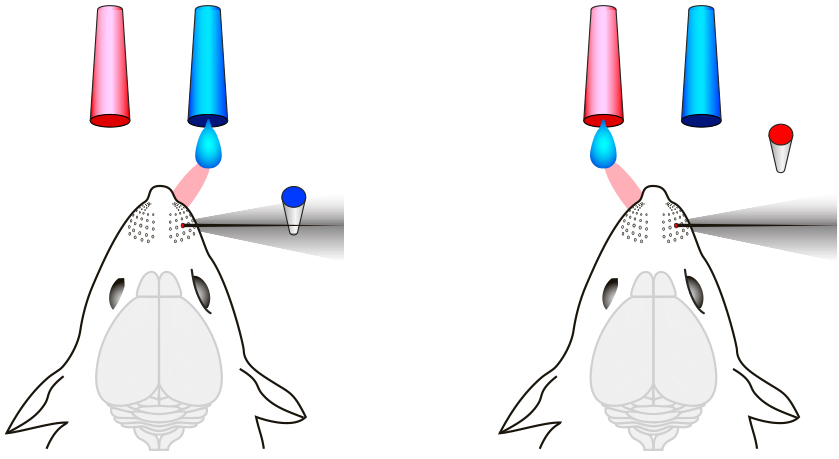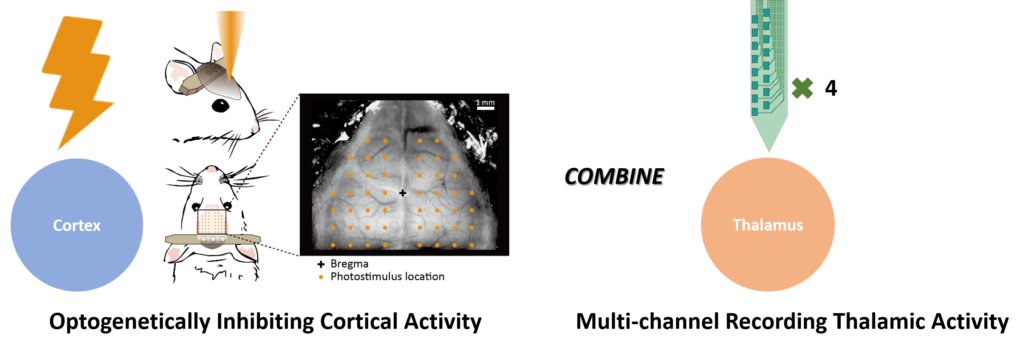Working memory, the process that temporarily holds multiple pieces of information for mental manipulation, is essential to many cognitive capabilities such as reasoning and decision making. We are interested in understanding how working memory is encoded, maintained in the brain.
To do so, we first developed a delayed response task that requires a short term maintenance of memory (Guo, Nuo, et al, 2014). Then we used optogenetics to probe which brain area is required during the behavior. After identifying the relevant brain areas, we used high density probe to record neural activity and correlated neural activity with memory.

Functional mapping of corticothalamic connections
Growing evidence has suggested that corticothalamic connections play an important role not only in sensory processing, but also in higher-order functions such as learning and working memory. We found that the high order thalamic nuclei, the ventral medial and ventral anterior alteral nuclei (VM/VAL), was requried for maintianing the short-term memory (Guo, Inagaki, et al, 2017). The activity of VM/VAL crucially depends on the input from the anterior lateral motor cortex. This identified cortex as the major input to the high order thalamic nuclei VM/VAL.
To further study what drives high order thalamus, we combine high spatial-temporal optogenetic perturbation with high-throughput multi-channel electrophysiology to map functional corticothalamic connections in awake mice.

Brain Wide Imaging to Align Electrophysiological and Anatomical Data
Light-sheet fluorescence microscopy (LSFM) allows fast imaging of chemically cleared mouse brains with low phototoxicity. However, this approach highly depends on the optical transparency of the cleared tissue and even well cleared tissue yields blurred images when the imaging depth exceeds a few millimeters. We develop fast optical tools to image whole mouse brain with near-subcellular resolution. An important challenge during recording is to place the electrode tip in a specific sub-cortex area , by brain wide imaging to detect the DiI fluorescence and aligning with reference atlas, we can estimate the coordinates of each recording site precisely and high throughput.